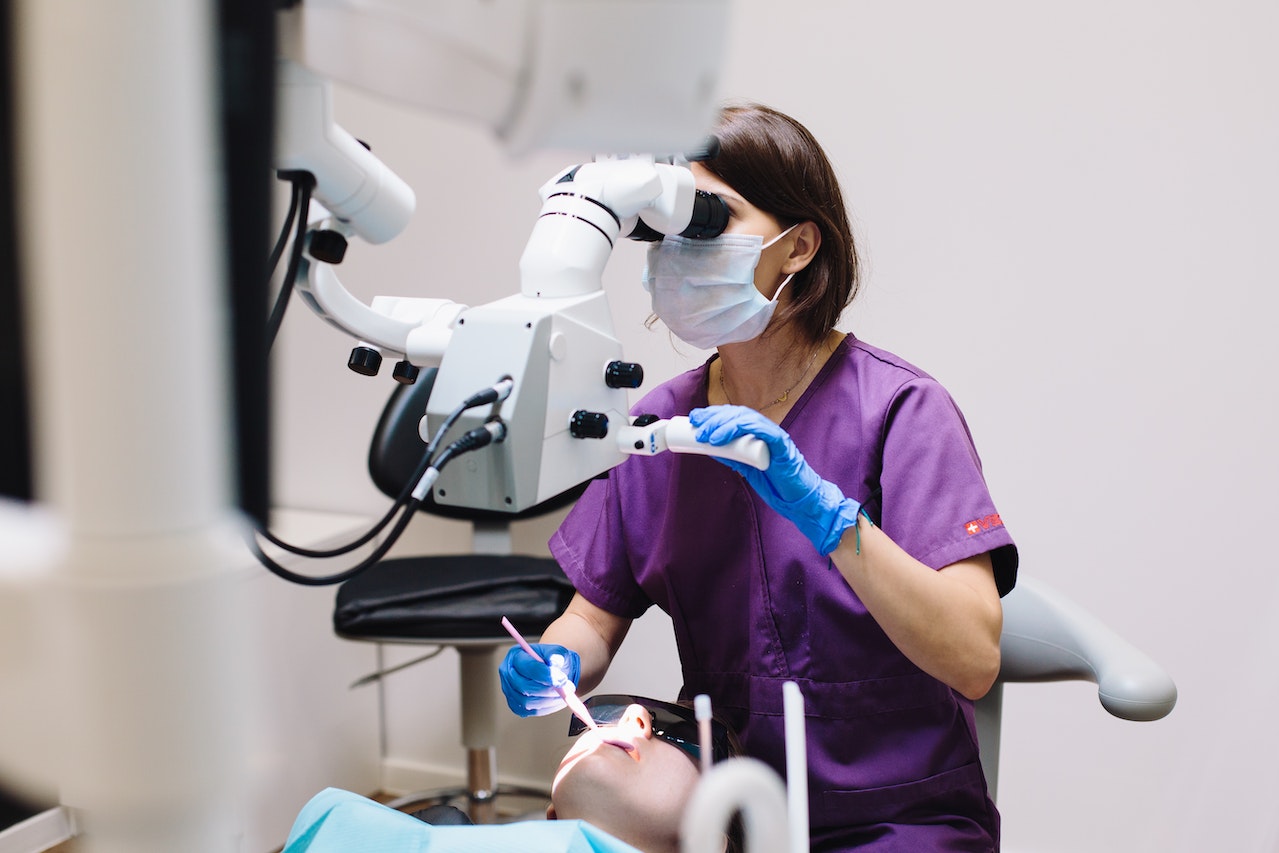During each visit to your dentist, there are multiple oral health concerns they check up on. Tooth decay and gum disease are the ones with which patients are most familiar. However, oral cancer is another condition that your dentist checks for during each visit. This concern occurs infrequently, but it’s essential to catch it in its earliest stages. When caught early, treatment is often highly successful. As a result, your dentist pays special attention to signs of oral cancer during each visit.
Common Symptoms of Oral Cancer Your Dentist Checks For
Throughout your visit, your dentist will watch for the various signs of oral cancer. Among these symptoms can be found discoloration that occurs in the membranes of the mouth. They also look for odd growths in the form of polyps or lesions within the mouth that aren’t healing properly. Oral cancer can extend deeper into the orofacial area than the oral cavity. It can also form within the upper throat and the nasal area. If oral cancer is possible, your dentist may order one or more of the following tests.
- Oral Brush Biopsies – This test starts with a special tool used to remove a tissue sample from the suspected area. The resulting biopsy will be sent to an external lab for complete testing.
- Endoscopy – This narrow tube has a camera embedded at the tip to help your practitioner observe potential signs of oral cancer more closely. Your dentist will check the back of the mouth and throat for tumors, lesions, and polyps using the camera in the tube.
- Barium Swallowing Tests – X-rays can detect the presence of barium, making it a useful substance for visualizing areas difficult to see with imaging equipment. Patients undergoing this test will be asked to swallow small amounts of a liquid containing barium while imaging is done. The resulting images will reveal the presence of any concerning blockages in the throat.
- HPV Testing – HPV, also known as human papillomavirus, is a microorganism responsible for various forms of cancer. Its absence can eliminate certain types of oral cancer as a concern.
Your dentist or practitioner may order numerous other forms of testing during the diagnostic process. These can include additional x-rays, MRI scans, and CAT scans. The data they provide can be vital in identifying the problem and suggesting treatment options. Using these methods, they’ll be able to identify the aggressiveness of cancer, how far its progressed, and if it has traveled to other areas of the body.
The Various Forms Of Oral Cancer Your Dentist Checks For
There is a range of oral cancer types. Lymphoma is among the most common and forms within the lymph nodes within the oral cavity. Sarcomas are an oral cancer formed within the fibrous tissue, nerves, blood vessels, or fat found within the oral tissues. Mucosal melanoma is a form that develops within the membranous tissue in the orofacial area, such as the cheeks, gums, and throat. Visiting your dentist is one more way you can protect yourself from life-threatening diseases while preserving a beautiful smile.
